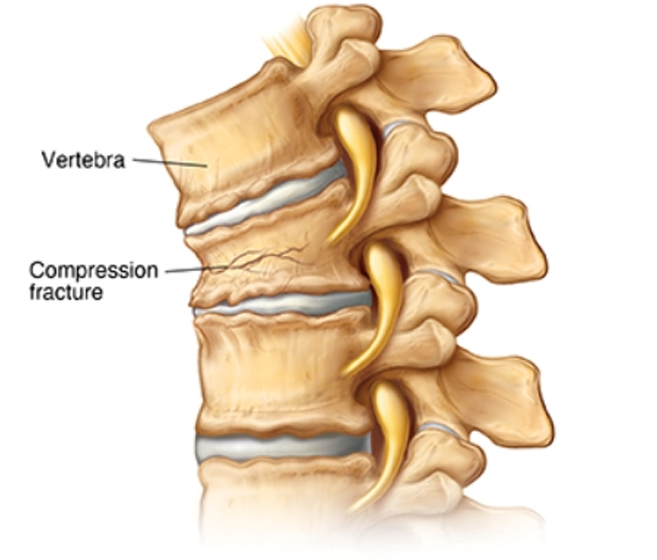Spinal fractures
Service > Spinal fractures

Spinal fractures
A spinal fracture is a dislocation or fracture of the vertebrae (backbone) and can occur anywhere along the spine. Most spinal fractures are caused from injury or trauma from car accidents, falls, sports or some sort of high velocity impact. Injuries from these accidents can range from mild muscle and ligament strains to more serious fractures and spinal cord damage. Minor fractures of the spine can be healed with rest and medication, however, more severe fractures might require surgery to realign the bones. If left untreated, spinal fractures can lead to permanent spinal cord injury, nerve damage and paralysis.
🔷 Spinal Fractures – Background
Spinal fractures refer to breaks or cracks in the vertebrae (the bones of the spine). These injuries can range from minor compression fractures to severe fractures that may cause spinal instability or damage to the spinal cord. Spinal fractures are often the result of trauma but can also occur due to conditions like osteoporosis or cancer.
📌 Common Causes:
Traumatic injuries (e.g., car accidents, falls, sports injuries)
Osteoporosis (weakened bones prone to compression fractures)
Spinal tumors or cancers that weaken the bone
High-impact incidents (e.g., industrial or construction accidents)
Pathological fractures due to underlying bone disease
📌 Typical Symptoms:
Sudden and severe back pain
Pain that worsens with movement or standing
Loss of height or hunched posture (especially in compression fractures)
Numbness, tingling, or weakness if spinal nerves are affected
In severe cases, loss of bladder or bowel control (if spinal cord is involved)
📌 Why Early Treatment Is Essential:
Spinal fractures can lead to permanent damage if not treated promptly. Immediate medical attention helps reduce pain, stabilize the spine, and prevent nerve damage or paralysis, especially in cases involving spinal cord compression.
📌 Available Services May Include:
Emergency and trauma care
Comprehensive evaluation by spine specialists
Diagnostic imaging (X-rays, CT scans, MRI)
Pain management (medication, nerve blocks)
Bracing to support healing
Minimally invasive procedures like vertebroplasty or kyphoplasty
Surgical stabilization (if needed for complex or unstable fractures)
Rehabilitation and physiotherapy post-treatment

